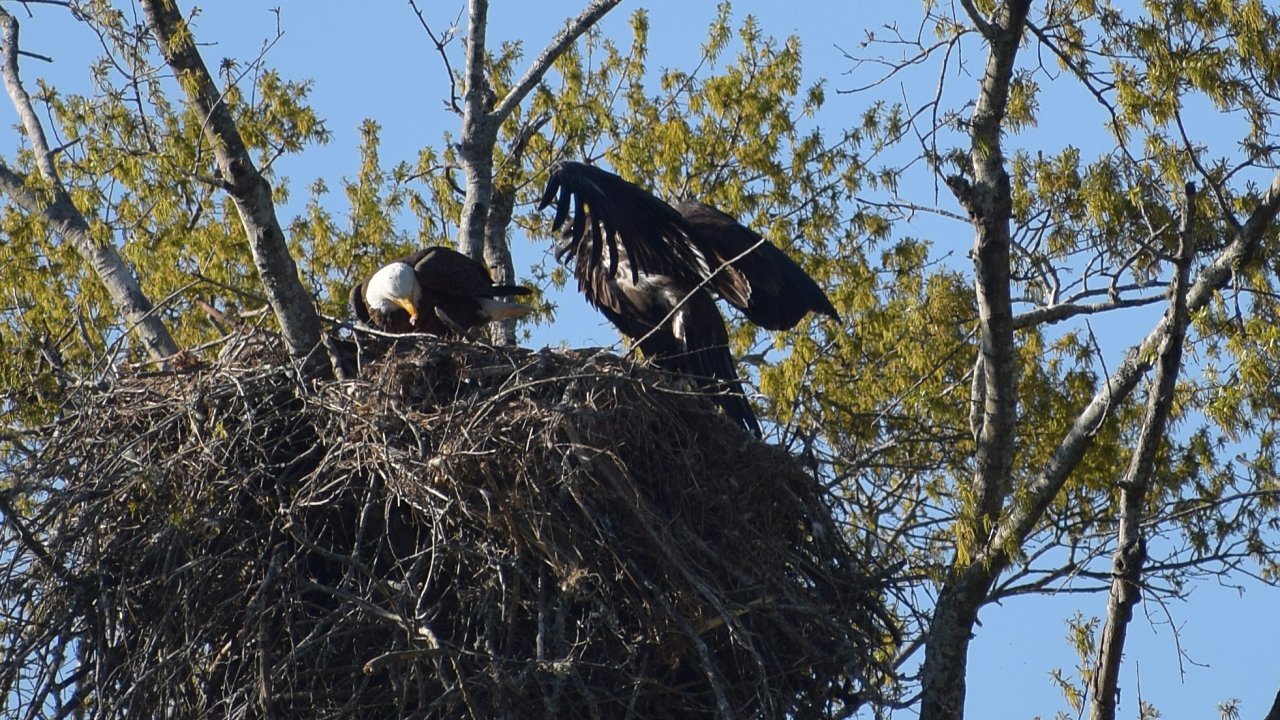Insights > Eagles Win Game of Chicken with Entergy in Madison County
Eagles Win Game of Chicken with Entergy in Madison County
04/05/2017

Economic and residential growth is taking flight in southern Madison County…and so is a pair of American bald eagles and their fledglings. And when growth and wildlife intersect, well…sometimes Nature wins out.
That’s what happened as work began on the Madison to Hinds 230kV Improvement Project, a 25-mile transmission line scheduled to be complete in summer 2018. The project will enhance economic development in the two counties, and is being driven by increased load and job growth in south Madison County.
THE EAGLE HAS LANDED
“The first thing we did was a route study, and during the Environmental Assessment and Alternative Route Analysis in 2014 we learned of an eagle’s nest along the western side of a corridor we were considering,” said Greg Borne, Entergy Mississippi senior project manager. “It was an active nest with fledglings, so we contacted our environmental contractor to see what we needed to do to be in compliance with our Avian Protection Plan and federal regulations. We learned the nest was too close to our proposed line, and that we would need to move.”
So move they did, platting a new route 917 feet from the nest—quite a bit farther than the 660-foot buffer required by the U.S. Fish and Wildlife Service. Preliminary design work was done, and the route was approved by the Mississippi Public Service Commission. Survey activities commenced, including a Phase II environmental assessment which found….more eagle nests!
“The contractor identified a new eagle’s nest on the west side of the proposed line, about 100 feet away, which appeared to be abandoned,” Borne said. “But a third nest had recently been built on the east side of our proposed line, about 200 feet from it.”
NO FLY ZONE
So now the newly-proposed line, while far enough away from the original nest, ran right between the two newly-discovered nests, in violation of federal regulations. It was back to the drawing board.
“We found a way to route around the third nest to the east, creating an 800-foot buffer, and the affected landowner agreed to let us re-route around the back of his property,” said Borne. “But we had to go back to our regulatory group because this newest proposed route would be outside of our MPSC-approved variance.”
LEGAL EAGLES
Entergy Mississippi’s regulatory and legal departments signed off on this third route in January 2016, verifying that it would still meet compliance with the MPSC order, but now the clock was ticking. The breeding period for eagles in Mississippi is from October through May, and includes a one- to three-month nest-building period.
“It was imperative that we had the property cleared and the line built before the breeding season began in 2016 because of the possibility that they or another pair of eagles would build yet another nest,” said Borne.
NEST IN PEACE
Entergy has an Avian Protection Plan in place that protects birds and protects the company’s lines. There are also federal laws the company follows, such as the Migratory Bird Treaty. But bald eagles, our national symbol, get special treatment under the law.
“Eagles get special protection through the Bald and Golden Eagle Protection Act,” said Toby Chu, Entergy Louisiana environmental analyst. “BGEPA protects not only the bird, but the feathers, eggs and nest--even inactive nests.”
Chu notes that BGEPA is much stricter than other avian regulations, and that it requires that there not be any disturbance that results in a decrease of the birds’ success.
“It’s a pretty powerful law, but the eagle population is doing really well now,” she said. “The relationship we have with the federal agencies helps ensure we are in compliance. But it’s not just about compliance—we want to do the right thing.”
STRAIGHTEN UP AND FLY RIGHT
Ultimately, the Capital Projects-Transmission and Entergy Mississippi teams were successful, and so were the eagle parents, which recently fledged their third brood of chicks in three years. The newest two chicks were born in the third identified nest, and recently took their first flights--proving once again that nature and man can coexist.

